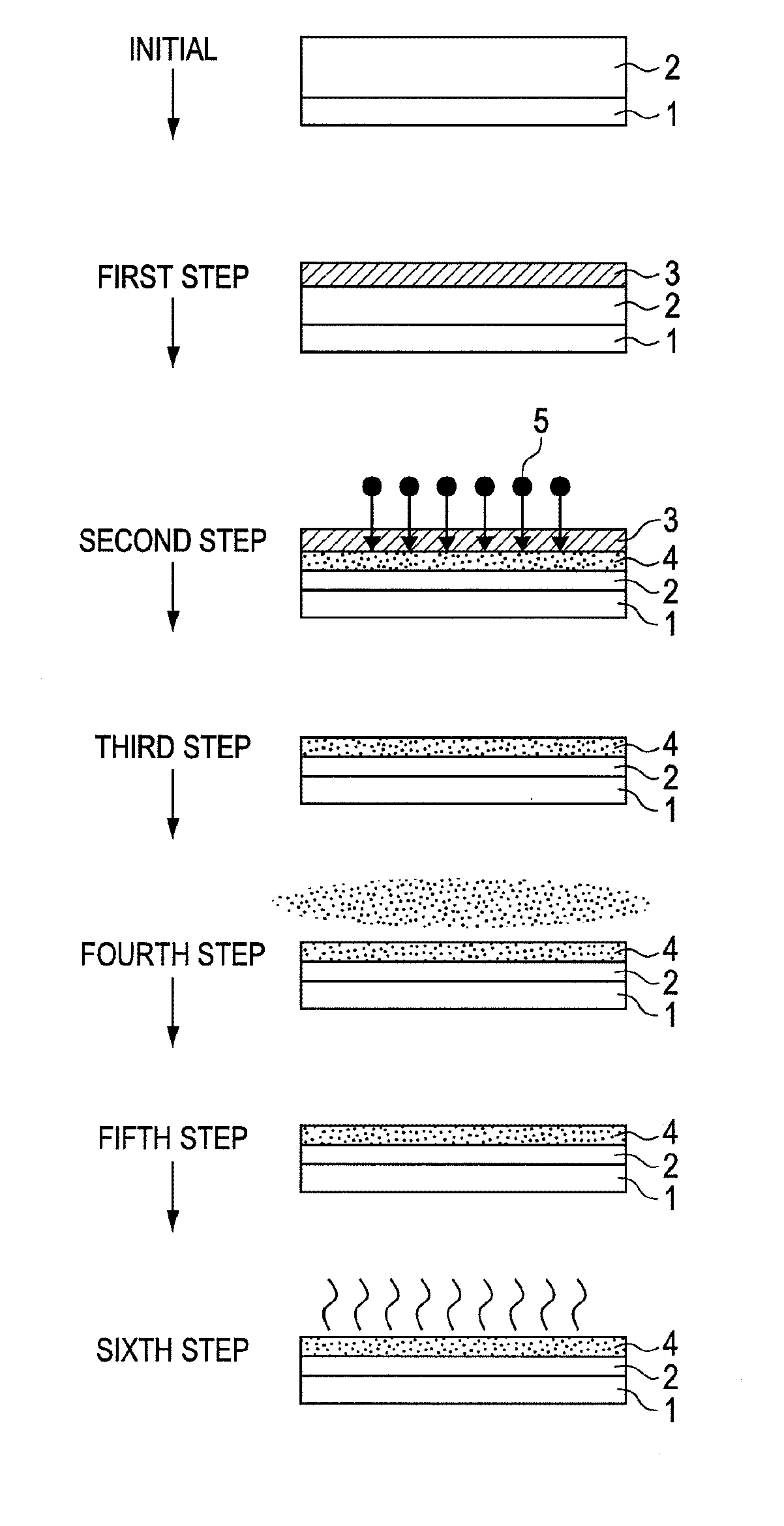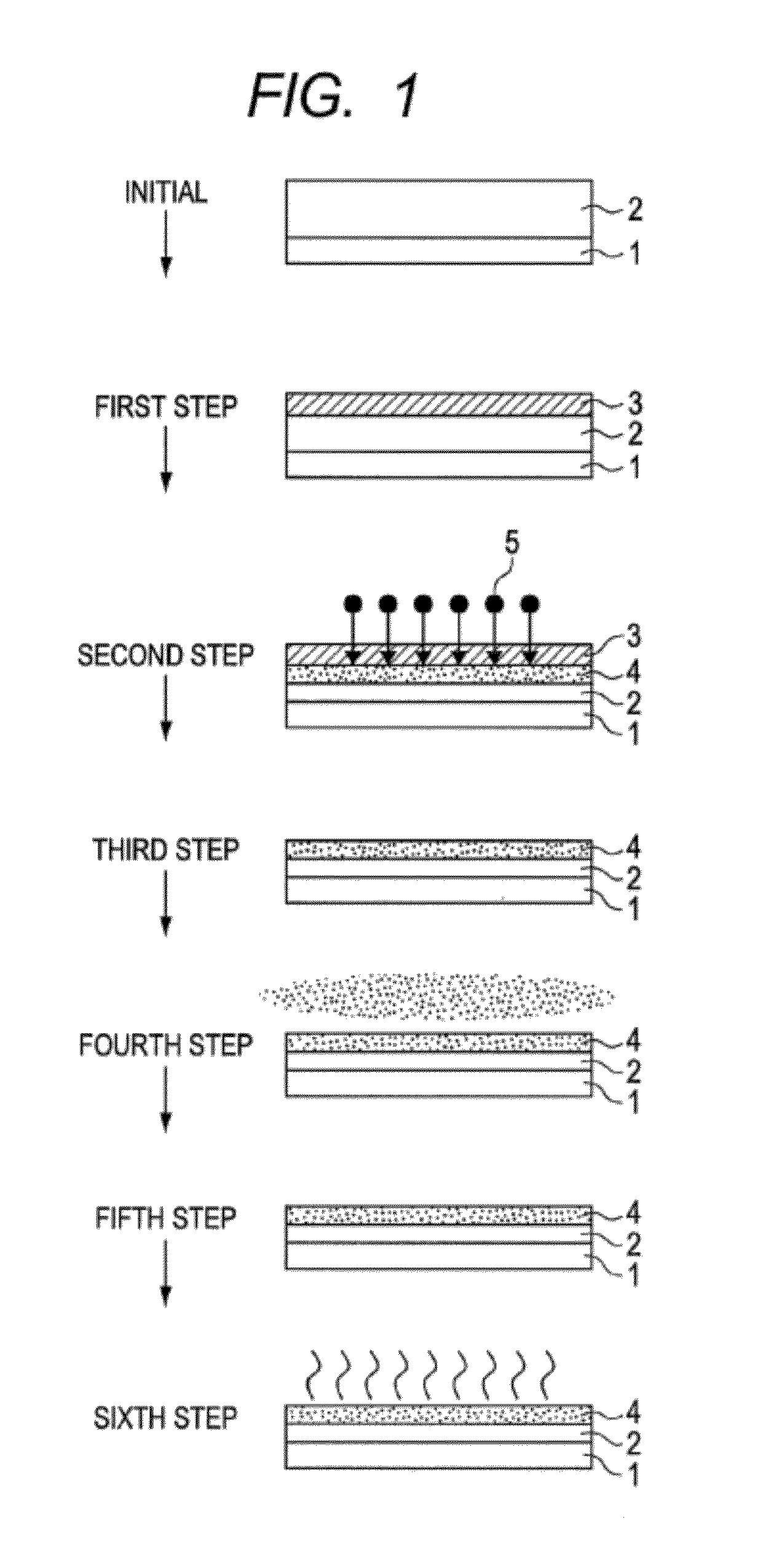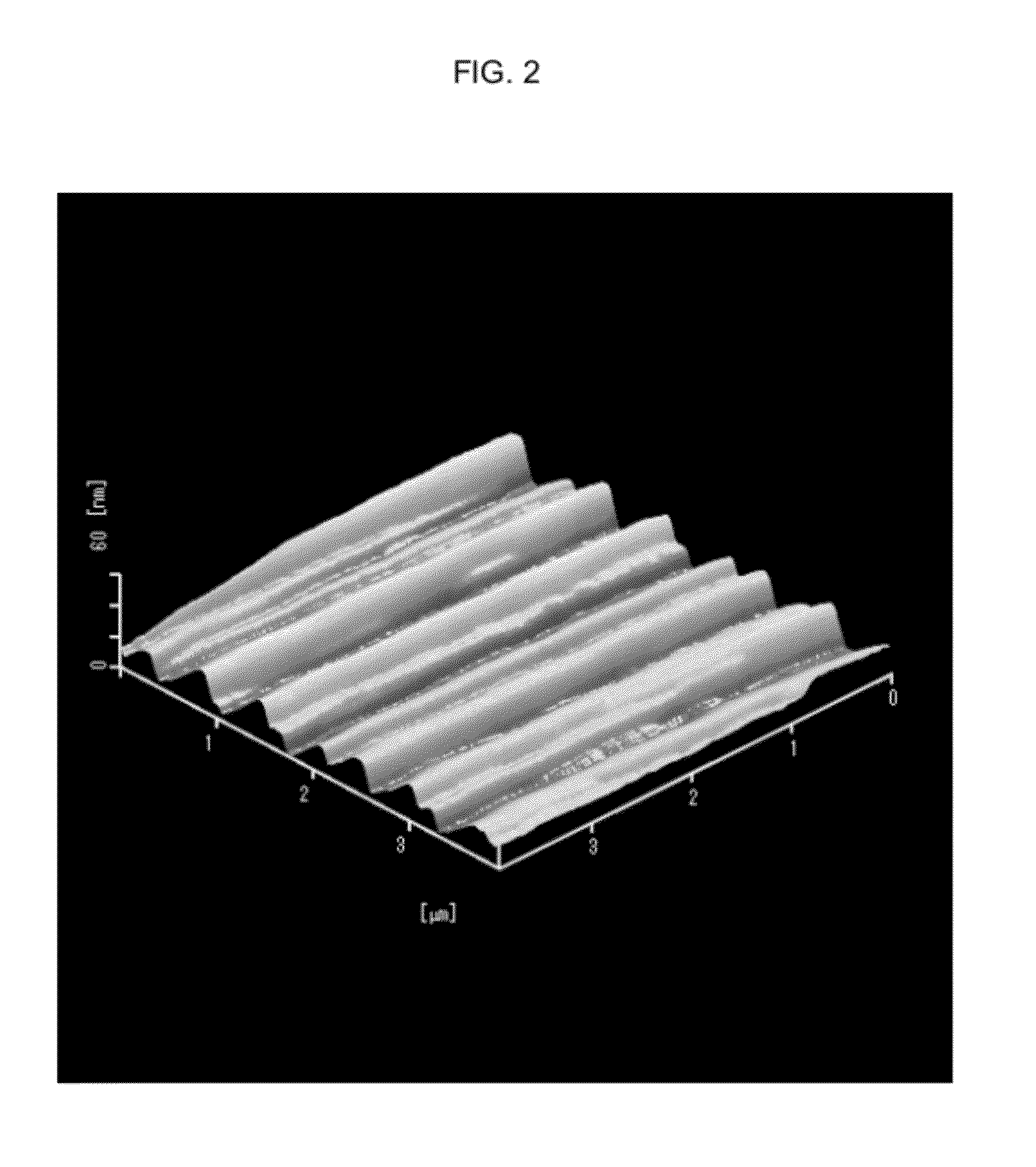Substrate processing method and method of manufacturing crystalline silicon carbide (SIC) substrate
a technology of crystalline silicon carbide and substrate, which is applied in the direction of basic electric elements, electrical apparatus, semiconductor devices, etc., can solve the problems of increasing the number of processes, difficulty in ensuring the reproducibility of maintaining the surface flatness of silicon carbide samples, and the concern of heavy metal contamination of resists, so as to reduce surface roughness
- Summary
- Abstract
- Description
- Claims
- Application Information
AI Technical Summary
Benefits of technology
Problems solved by technology
Method used
Image
Examples
example 1
[0048]By the substrate processing method 1, the substrate processing method of the single crystal silicon carbide (SiC) substrate was performed. The plasma irradiation by the inductively coupled plasma (ICP) etcher in the fourth step was performed using a mixed gas of argon (Ar) gas and carbon tetrafluoride (CF4) gas under conditions shown in table 1.
TABLE 1RF power of an upper coil400WSubstrate bias150WCF4 gas flow rate30sccmAr gas flow rate20sccmEtching pressure0.2PaPlasma irradiation period10secondsSiC etching amount20nm
[0049]In the high temperature heating processing in the fifth step, the activation annealing processing was performed using a high-frequency induction heating furnace at a temperature of 1700° C. for ten minutes.
[0050]The surface roughness (RMS value: root mean square value) of the obtained substrate was measured using an atomic force microscope (AFM: atomic force microscopy). The measurement was performed in a damping force mode over a measurement area of 4 micro...
example 2
[0059]In order to reduce the amount of etching of the silicon carbide (SiC) substrate by the plasma irradiation, the substrate processing was performed under conditions shown in table 2, instead of using the plasma conditions of the inductively coupled plasma (ICP) etcher in the fourth step in example 1.
TABLE 2RF power of the upper coil400WSubstrate bias0WCF4 gas flow rate30sccmAr gas flow rate20sccmEtching pressure0.2PaPlasma irradiation period60secondsSiC etching amount0nm
[0060]FIG. 5 is a surface observation diagram after annealing processing in the present example. When the surface roughness was observed by AFM, the RMS value was 1.6 nm; it has been found that the preprocessing by the plasma irradiation before the annealing process has the effect of reduction in the surface roughness when the high temperature processing is performed on the single crystal silicon carbide (SiC) (FIG. 5).
[0061]As described above, in the present example, it has been found from table 2 and FIG. 5 tha...
example 3
[0062]In order to evaluate the flow rate ratio of a process gas by the plasma irradiation, the substrate processing was performed under conditions shown in table 3, instead of using the plasma irradiation conditions by the inductively coupled plasma (ICP) etcher in the fourth step in example 1.
TABLE 3RF power of the upper coil400WSubstrate bias0WCF4 gas flow rate0sccmAr gas flow rate20sccmEtching pressure0.2PaPlasma irradiation period60secondsSiC etching amount0nm
[0063]FIG. 6 is a surface observation diagram after annealing processing in the present example. When the surface roughness was observed by AFM, the RMS value was 2.1 nm; it has been found that, although the preprocessing by the plasma irradiation before the annealing processing with only the argon (Ar) gas has a small effect as compared with the case where the carbon tetrafluoride (CF4) gas was added, the preprocessing has the effect of reduction in the surface roughness when the high temperature processing is performed on...
PUM
 Login to View More
Login to View More Abstract
Description
Claims
Application Information
 Login to View More
Login to View More - R&D
- Intellectual Property
- Life Sciences
- Materials
- Tech Scout
- Unparalleled Data Quality
- Higher Quality Content
- 60% Fewer Hallucinations
Browse by: Latest US Patents, China's latest patents, Technical Efficacy Thesaurus, Application Domain, Technology Topic, Popular Technical Reports.
© 2025 PatSnap. All rights reserved.Legal|Privacy policy|Modern Slavery Act Transparency Statement|Sitemap|About US| Contact US: help@patsnap.com



